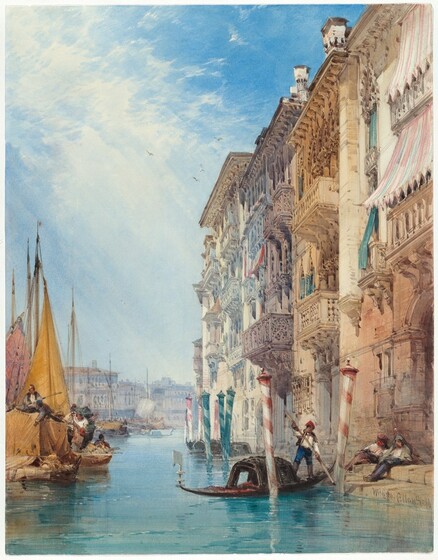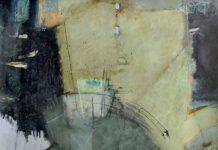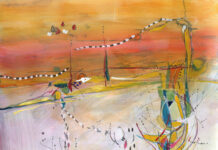Watercolor painting has a rich history in Britain, dating back to the early 1700s. Over the course of two centuries, watercolor painting underwent a significant transformation, with changes in technique, subject matter, and the social context in which it was created.

At the beginning of the 18th century, watercolor painting was a relatively new and unconventional medium. Most artists at the time were trained in oil painting, which was considered more prestigious and had a longer history. However, a group of artists began experimenting with watercolors, attracted by its transparency and luminosity. They used watercolors to create delicate and detailed studies of plants, animals, and landscapes, often as preparatory sketches for larger oil paintings.
One of the most important figures in the development of watercolor painting during this period was Paul Sandby, a landscape painter who was instrumental in popularizing the medium among both artists and collectors. His detailed and atmospheric depictions of the British countryside were highly influential and helped establish watercolor painting as a distinct art form.

During the 18th century, watercolor painting continued to gain popularity, particularly among amateur artists. Many wealthy patrons began to collect watercolor paintings, and exhibitions of watercolors became more common. However, watercolor painting remained relatively marginalized compared to oil painting, and many artists continued to see it primarily as a preparatory medium.
The 19th century saw a significant change in the status of watercolor painting. In 1804, the Royal Watercolour Society was founded, providing a dedicated space for watercolor artists to exhibit their work. This helped to elevate the status of watercolor painting and encouraged more artists to work in the medium.
At the same time, the subject matter of watercolor painting began to shift. Rather than focusing exclusively on landscape and natural history, artists began to explore more diverse themes, such as urban scenes, genre scenes, and portraits. Many of these works were created as finished pieces rather than studies for oil paintings, further establishing watercolor painting as a distinct and legitimate art form.

One of the most influential watercolor painters of the 19th century was J.M.W. Turner. Turner’s innovative use of color and light helped to push the boundaries of what was possible in watercolor painting, and his influence can be seen in the work of many later artists. Turner’s success also helped to further establish watercolor painting as a serious and respected medium.
By the end of the 19th century, watercolor painting had become an established and respected art form in Britain. The popularity of the medium had grown significantly, and many artists had achieved success working primarily in watercolors. Although oil painting continued to be seen as the most prestigious medium, watercolor painting had carved out its own niche and had proven its ability to capture the beauty and diversity of the world in a unique and powerful way.

Pulled from the National Gallery of Art’s permanent collection, an exhibition of approximately 80 recently acquired drawings and watercolors provides an overview of these two influential centuries of British art. Works on view reveal European influences on British art starting in the 1700s. They trace the development of watercolor as a national specialty and introduce the varied approaches that emerged during the Victorian era.
On view through August 6, 2023, Drawing in Britain, 1700–1900: New Additions to the Collection not only includes significant examples of the landscapes that are traditionally associated with British art, but it also highlights portraits, history scenes, and nude studies. Works by British women provide glimpses into the lives and work of several fascinating yet little-known artists.
Today, watercolor is celebrated and practiced by top artists around the world. Join the celebration at next year’s Watercolor Live!







